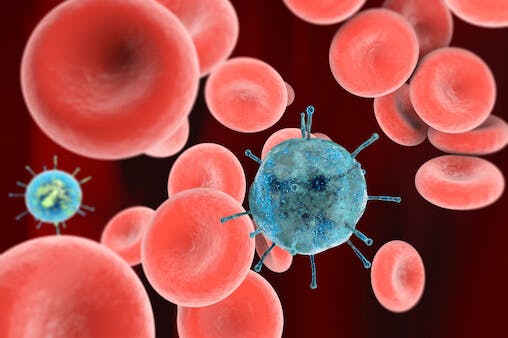Viruses Are Not Quite Alive and Not Quite Dead, and Other Things to Know About COVID-19

What they are capable of is replicating and adapting, and each virus has a unique way of doing that. Viruses are programmed to detect particular surface proteins or channels on the outside of a cell, and make their way in via the favored route.
A Cellular Doorway
For COVID-19, the favorite avenue to cellular entry appears to be the ACE-2, or angiotensin-converting enzyme 2, receptor. This part of the cell plays a role in regulating blood pressure. Major areas of the body that produce high amounts of cells with ACE-2 receptors include the lungs, the heart and the GI tract.
Cells within the lungs contain type 2 pneumocytes which produce a natural surfactant. These soap-like molecules reduce the surface tension of pulmonary fluids, enabling the lungs to expand and contract freely. Premature babies are sometimes born before their lungs are able to produce these surfactants, which can contribute to neonatal respiratory distress. In adults, lack of surfactant can produce ARDS, or acute respiratory distress syndrome. SARS-CoV-2, the virus that causes COVID-19, or coronavirus, when entering into the lungs, accesses the cells and then overtakes them in order to replicate, directly damaging otherwise healthy lung tissue. Difficulty breathing associated with coronavirus is partly due to the fact that damaged cells may not be able to produce the necessary amounts of surfactant, resulting in a reduced ability to expand and contract.
COVID-19 within heart tissue is more of a concern if heart disease is present already. An undermining of healthy cellular activity could potentially lead to cardiomyopathy, wherein the heart cannot pump blood efficiently to all areas of the body. As the ACE-2 receptor regulates blood pressure, there has been some experimentation with ACE-2 blockers and other types of blood pressure medication to see if those may mitigate the virus, but studies have yet been inconclusive.
Daily Evolution
Coronavirus is still a new phenomenon, and as such, new information about its characteristics and symptoms are evolving daily. Early reports did not include gastrointestinal symptoms as an effect of the illness, however, there have now been a number of cases recorded that exhibit GI distress in the days before respiratory symptoms occurred. Nausea, diarrhea, vomiting and abdominal pain have been present in some, but not all, cases. While it is, as yet, unclear whether the virus can be detected in the lining of the digestive tract, it has been found in stool samples of those known to be sick.
It’s no surprise that pharmaceutical companies are clamoring to be the first to the finish line in producing a vaccine for coronavirus. Several companies are in clinical studies with products that are potentially effective. Evidence is also emerging that several antimalarial drugs, including chloroquine and hydroxychloroquine, show promise in fighting the disease.
Empower Yourself
The constant barrage of dim statistics and doomsday prepping can become overwhelming. Some of the things you can do to keep yourself and your family healthy are the things we often do already.
- Wash your hands when you’ve been in public places
- Avoid touching your face, especially the eyes, nose, and mouth with contaminated hands
- Wipe down hard surfaces with a bleach dilution or wipes that state their ability to kill viruses and bacteria.
This is easy enough to do in the home, but if life requires you to go out in public for something essential, it’s helpful to bring your own and thoroughly clean the surfaces you come into contact with before and after you use them.
If someone in your family does have the virus, keeping at a distance of 6 feet or more lessens the chance it will be transmitted to you through the air.
Remember to take care of yourself. Getting adequate rest, eating lots of green, leafy veggies and giving your body a good supply of vitamins, including D3, will go a long way in supporting its ability to maintain health and boost immune response!


